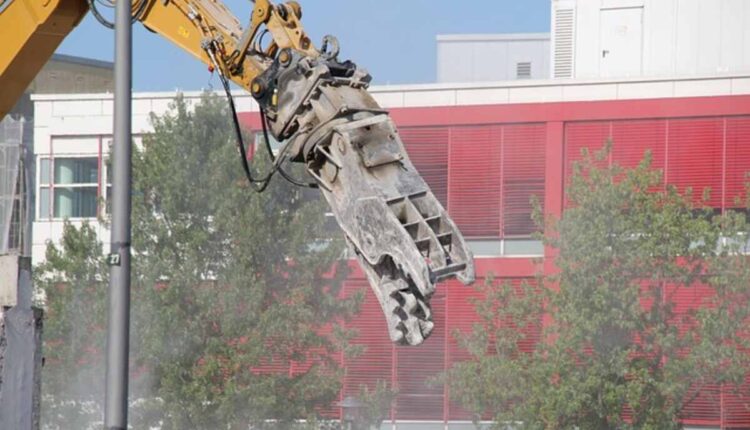Demolition hammers are essential tools for controlled demolition of concrete structures. While rotary hammers feature drilling motion, demolition hammers focus on high-impact breaking tasks. Find the best Demolition Fontana.
One of the best choices available today is the XtremepowerUS Heavy Duty demolition hammer. It boasts an electric motor rated as the highest among other products and offers peace of mind through a two-year warranty.
Power
Demolition hammers are powerful power tools designed to break through tough materials like concrete, masonry, and tile quickly and efficiently for construction, renovation, and demolition projects. Their high-impact force delivers quick results, allowing projects to be completed more quickly.
As much as other power tools may assist in demolishing difficult surfaces, none are quite as efficient at doing the job as demolition hammers and breakers. These machines are specially designed to quickly take down concrete foundations or brick walls, saving days off your project schedule. Furthermore, their safer design provides less back and shoulder strain during use compared to sledgehammers, which may strain both the back and shoulders.
Depending on the size and nature of your project, you can select various types of hammers. Smaller models typically run off compressed air, while larger rig-mounted jackhammers often utilize petrol or diesel engines as a power source. There are even hydraulic demolition hammers that use hydraulic fluid instead of air for more vital strikes.
No matter the type of hammer you select, make sure it features anti-vibration technology to reduce fatigue and hand injuries. Some models even come equipped with soft grip handles and extensive cushioning for additional comfort during prolonged use. Furthermore, look out for models made up of complete metal parts to guarantee durability and extend equipment lifespan.
Design
Demolition hammers are powerful tools used for excavation tasks such as breaking up concrete foundations and prying into pavements to ease demolition-related jobs. These powerful power tools are essential tools for professional contractors handling heavy materials; however, they also come in handy in restoration tasks to renovate old structures with brick or concrete exteriors.
Destruction hammers can be used with chisels to pound into materials or for drilling holes, chip away at plaster beds or chip away mud beds, and more. Some demolition hammers even come equipped with anti-vibration technology for added comfort and safety.
A critical distinction between hammer demolition and rotary breakers lies in their respective uses; one utilizes pure percussion shockwaves to fracture materials, while the other revolves its steel disc to cut through solid objects like rocks and concrete. Being aware of these distinctions will allow you to select the most appropriate tool for your demolition needs.
Hammer demolition equipment can be dangerous if not operated safely. To reduce injuries caused by misuse, contractors must wear appropriate personal protective equipment (PPE), including safety glasses, gloves, and hearing protection. They should also clear their work area of potential hazards and inspect underground utilities before commencing any demolition operations. Lastly, they should adhere to their operator’s manual for safe operations.
Safety
As soon as a demolition project begins, appropriate measures must be taken to safeguard both workers and the surrounding environment. These precautions include conducting risk evaluations, devising comprehensive safety plans, training all workers on safety practices, acquiring all required permits from local regulators, and complying with any local regulations that apply.
Before using a jackhammer, it is imperative to inspect the work area for gas lines, electrical wiring, and unstable structures. Workers should wear protective equipment, including hard hats, steel-toed shoes, and face masks, as a form of safeguard. In addition, the tool itself, including the power cord, switches, and handles, should be verified to work efficiently.
Hammer impact energy is determined by its weight and design; therefore, selecting an appropriate one for any task at hand is critical. A flat-tip hammer works best when breaking up concrete pavements, while pointed bits excel in demolishing concrete slabs with structural elements. A polyethylene sheet placed over the target surface helps capture shrapnel and dust while protecting siding or windows from damage during demolition.
Workers using hammers must maintain a steady and balanced stance to reduce injury risks. Feet should be placed shoulder-width apart to reduce chances of falls while using upper body strength instead of back muscles for leverage. They should firmly grasp both handles with both hands to minimize hand fatigue and ensure they don’t drop their tool by doing this.
Convenience
Hammer demolition requires heavy-duty power tools and proper safety gear, including protective clothing such as dust masks and ear defenders, in order to operate effectively. As these heavy-duty power tools may produce carbon monoxide during use and create dust particles, they must wear these protection items while working. Furthermore, depending on ventilation levels or workplace conditions, they may also make noise that could impact nearby workers as well as themselves.
As opposed to rotary hammer drills and breaker tools that combine rotation with impacting, the demolition hammer exclusively impacts without rotating. This provides for more precise control and uses. It can be used for drilling holes into concrete and masonry structures and breaking apart materials like plaster, mud beds, tiles, and concrete structures with ease.
Look at the demolition hammer’s joule unit rating—higher numbers indicate more power—to ensure that it has the appropriate impact energy for the material you’re working with. In addition, note its weight and power source—gas-powered demolition hammers tend to be heavier and more powerful than their electric counterparts.

